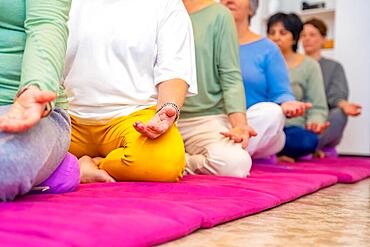Recent searches
Loading...
722-217 - Bhubaneswar, Odisha is nicknamed India?s ?City of Temples? in which around 350 are still standing, many dating back to well over one-thousand years. Shown here is an aspect of the 9th century Rameshwar Temple dedicated the Hindu deity Shiva.
1188-1105 - Songkram Thai Buddhist New Year parade, blessings and water battles celebrations in Chiang Mai, Thailand
1188-1104 - Songkram Thai Buddhist New Year parade, blessings and water battles celebrations in Chiang Mai, Thailand
1188-1103 - Songkram Thai Buddhist New Year parade, blessings and water battles celebrations in Chiang Mai, Thailand
1188-1102 - Songkram Thai Buddhist New Year parade, blessings and water battles celebrations in Chiang Mai, Thailand
722-205 - Bhubaneswar, Odisha is nicknamed India's City of Temples in which around 350 are still standing, many dating back to well over one-thousand years. Shown here is the 11th century Rajarani Temple dedicated the Hindu deity Shiva.
722-204 - Bhubaneswar, Odisha is nicknamed India's City of Temples in which around 350 are still standing, many dating back to well over one-thousand years. Shown here are aspects of the 9th century Mukteswara Temple dedicated the Hindu deity Shiva.
722-203 - Bhubaneswar, Odisha is nicknamed India's City of Temples in which around 350 are still standing, many dating back to well over one-thousand years. Shown here are aspects of the 9th century Mukteswara Temple dedicated the Hindu deity Shiva.
722-202 - Bhubaneswar, Odisha is nicknamed India's City of Temples in which around 350 are still standing, many dating back to well over one-thousand years. Shown here are aspects of the 9th century Mukteswara Temple dedicated the Hindu deity Shiva.
722-201 - Bhubaneswar, Odisha is nicknamed India's City of Temples in which around 350 are still standing, many dating back to well over one-thousand years. Shown here are aspects of the 9th century Mukteswara Temple dedicated the Hindu deity Shiva.
722-213 - Bhubaneswar, capital of the ancient, east Indian State of Odisha, previously Orissa. Here the hilltop Digambara Jain Temple which stands above the Udayagiri and Khandagiri complex of caves dating back to over 100 years BCE.
722-212 - Bhubaneswar, Odisha. Here we see examples of monks' cells cut into the hillside rock among the Udayagiri and Khandagiri caves dating back to over 100 years BCE sculptured into the hillside as religious retreats for Jain devotees.
722-210 - Bhubaneswar, Odisha. Here we see examples of monks' cells cut into the hillside rock among the Udayagiri and Khandagiri caves dating back to over 100 years BCE sculptured into the hillside as religious retreats for Jain devotees.
722-211 - Bhubaneswar, Odisha. Here we see examples of monks' cells cut into the hillside rock among the Udayagiri and Khandagiri caves dating back to over 100 years BCE sculptured into the hillside as religious retreats for Jain devotees.
722-209 - Bhubaneswar, Odisha. Here we see examples of monks' cells cut into the hillside rock among the Udayagiri and Khandagiri caves dating back to over 100 years BCE sculptured into the hillside as religious retreats for Jain devotees.
722-208 - Bhubaneswar, Odisha. Here we see examples of monks' cells cut into the hillside rock among the Udayagiri and Khandagiri caves dating back to over 100 years BCE sculptured into the hillside as religious retreats for Jain devotees.
722-207 - Bhubaneswar, Odisha. Here we see the garden at the entrance to the Udayagiri and Khandagiri caves dating back to over 100 years BCE sculptured into the hillside as religious retreats for Jain devotees.
722-206 - Bhubaneswar, Odisha. Here we see a small sanctuary near the entrance to the site of the of the Udayagiri and Khandagiri caves dating back to over 100 years BCE sculptured into the hillside as religious retreats for Jain devotees.
722-198 - Bhubaneswar, Odisha is nicknamed India's 'City of Temples' in which around 350 are still standing, many dating back to well over one-thousand years. Shown here is an aspect of the 11th century Lingaraja Temple complex dedicated the Hindu deity Shiva.
1243-544 - Aerial drone panoramic view of Parque dos Poetas in Oeiras, Lisbon, Portugal. The park extends over 25 hectares of green areas , embellished with more than 60 statues in honor of 60 poets, with capacity for 30 to 40 thousand visitors and free admission
722-197 - Konark, Puri District, Odisha, India, the bazaar in the street leading to the entrance gate to the grounds of the massive 30-metre high, mid-13th century Sun Temple dedicated to the Hindu Sun God, Surya. The Temple is constructed as a twelve-wheeled chari
722-195 - Konark, Puri District, Odisha, India, a stone statue of a mythical creature among the ruins in the grounds of the massive 30-metre high, mid-13th century Sun Temple dedicated to the Hindu Sun God, Surya. The Temple is constructed as a twelve-wheeled chari
722-196 - Konark, Puri District, Odisha, India, the massive 30-metre high, mid-13th century Sun Temple dedicated to the Hindu Sun God, Surya is constructed as a twelve-wheeled chariot drawn by seven horses all carved in stone, its walls covered with countless intri
722-194 - Konark, Puri District, Odisha, India, stone statues of elephants among the ruins in the grounds of the massive 30-metre high, mid-13th century Sun Temple dedicated to the Hindu Sun God, Surya. The Temple is constructed as a twelve-wheeled chariot drawn by
722-192 - Konark, Puri District, Odisha, India, the massive 30-metre high, mid-13th century Sun Temple dedicated to the Hindu Sun God, Surya is constructed as a twelve-wheeled chariot drawn by seven horses, all carved in stone, its walls covered with countless stat
722-193 - Konark, Puri District, Odisha, India, a stone statue of a mythical creature among the ruins in the grounds of the massive 30-metre high, mid-13th century Sun Temple dedicated to the Hindu Sun God, Surya. The Temple is constructed as a twelve-wheeled chari
722-191 - Konark, Puri District, Odisha, India, the massive 30-metre high, mid-13th century Sun Temple dedicated to the Hindu Sun God, Surya is constructed as a twelve-wheeled chariot drawn by seven horses, all carved in stone, its walls covered with countless intr
722-190 - Konark, Puri District, Odisha, India, the massive 30-metre high, mid-13th century Sun Temple dedicated to the Hindu Sun God, Surya is constructed as a twelve-wheeled chariot drawn by seven horses all carved in stone, its walls covered with countless intri
722-188 - Konark, Puri District, Odisha, India, the massive 30-metre high, mid-13th century Sun Temple dedicated to the Hindu Sun God, Surya is constructed as a twelve-wheeled chariot drawn by seven horses all carved in stone, its walls covered with countless intri
722-189 - Konark, Puri District, Odisha, India, pilgrims among the ruins in the grounds of the massive 30-metre high, mid-13th century Sun Temple dedicated to the Hindu Sun God, Surya is constructed as a twelve-wheeled chariot drawn by seven horses all carved in st
722-187 - Konark, Puri District, Odisha, India, the massive 30-metre high, mid-13th century Sun Temple dedicated to the Hindu Sun God, Surya is constructed as a twelve-wheeled chariot drawn by seven horses all carved in stone, its walls covered with countless intri
722-186 - Konark, Puri District, Odisha, India, pilgrims around the east, sunrise facing entrance to the massive 30-metre high, mid-13th century Sun Temple dedicated to the Hindu Sun God, Surya is constructed as a twelve-wheeled chariot drawn by seven horses all ca
1384-34 - Church of San Roman, Santuario del Santo Cristo, Campeche city, Campeche State, Mexico
1384-30 - Restaurant tables in historic street of Spanish colonial buildings, Campeche city, Campeche State, Mexico
1383-98 - The Kulamba Traditional Ceremony of the Chewa people takes place every year on the last Saturday in August near Katete. The Chewa who also live in Mozambique and Malawi come to pay homage to their Chief Kalonga Gaia Uni.
1383-96 - The Kulamba Traditional Ceremony of the Chewa people takes place every year on the last Saturday in August near Katete. The Chewa who also live in Mozambique and Malawi come to pay homage to their Chief Kalonga Gaia Uni.
1383-97 - The Kulamba Traditional Ceremony of the Chewa people takes place every year on the last Saturday in August near Katete. The Chewa who also live in Mozambique and Malawi come to pay homage to their Chief Kalonga Gaia Uni.
1383-95 - The Kulamba Traditional Ceremony of the Chewa people takes place every year on the last Saturday in August near Katete. The Chewa who also live in Mozambique and Malawi come to pay homage to their Chief Kalonga Gaia Uni.
1383-94 - The Kulamba Traditional Ceremony of the Chewa people takes place every year on the last Saturday in August near Katete. The Chewa who also live in Mozambique and Malawi come to pay homage to their Chief Kalonga Gaia Uni.
1383-92 - The Kulamba Traditional Ceremony of the Chewa people takes place every year on the last Saturday in August near Katete. The Chewa who also live in Mozambique and Malawi come to pay homage to their Chief Kalonga Gaia Uni.
1383-93 - The Kulamba Traditional Ceremony of the Chewa people takes place every year on the last Saturday in August near Katete. The Chewa who also live in Mozambique and Malawi come to pay homage to their Chief Kalonga Gaia Uni.
1383-91 - The Kulamba Traditional Ceremony of the Chewa people takes place every year on the last Saturday in August near Katete. The Chewa who also live in Mozambique and Malawi come to pay homage to their Chief Kalonga Gaia Uni.
1383-90 - The Kulamba Traditional Ceremony of the Chewa people takes place every year on the last Saturday in August near Katete. The Chewa who also live in Mozambique and Malawi come to pay homage to their Chief Kalonga Gaia Uni.
1383-89 - The Kulamba Traditional Ceremony of the Chewa people takes place every year on the last Saturday in August near Katete. The Chewa who also live in Mozambique and Malawi come to pay homage to their Chief Kalonga Gaia Uni.
1383-88 - The Kulamba Traditional Ceremony of the Chewa people takes place every year on the last Saturday in August near Katete. The Chewa who also live in Mozambique and Malawi come to pay homage to their Chief Kalonga Gaia Uni.
1383-87 - The Kulamba Traditional Ceremony of the Chewa people takes place every year on the last Saturday in August near Katete. The Chewa who also live in Mozambique and Malawi come to pay homage to their Chief Kalonga Gaia Uni.
1383-86 - The Kulamba Traditional Ceremony of the Chewa people takes place every year on the last Saturday in August near Katete. The Chewa who also live in Mozambique and Malawi come to pay homage to their Chief Kalonga Gaia Uni.
1383-85 - The Kulamba Traditional Ceremony of the Chewa people takes place every year on the last Saturday in August near Katete. The Chewa who also live in Mozambique and Malawi come to pay homage to their Chief Kalonga Gaia Uni.
1383-83 - The Kulamba Traditional Ceremony of the Chewa people takes place every year on the last Saturday in August near Katete. The Chewa who also live in Mozambique and Malawi come to pay homage to their Chief Kalonga Gaia Uni.
1383-84 - The Kulamba Traditional Ceremony of the Chewa people takes place every year on the last Saturday in August near Katete. The Chewa who also live in Mozambique and Malawi come to pay homage to their Chief Kalonga Gaia Uni.
1383-82 - The Kulamba Traditional Ceremony of the Chewa people takes place every year on the last Saturday in August near Katete. The Chewa who also live in Mozambique and Malawi come to pay homage to their Chief Kalonga Gaia Uni.
1383-81 - The Kulamba Traditional Ceremony of the Chewa people takes place every year on the last Saturday in August near Katete. The Chewa who also live in Mozambique and Malawi come to pay homage to their Chief Kalonga Gaia Uni.
1383-80 - The Kulamba Traditional Ceremony of the Chewa people takes place every year on the last Saturday in August near Katete. The Chewa who also live in Mozambique and Malawi come to pay homage to their Chief Kalonga Gaia Uni.
1383-79 - The Kulamba Traditional Ceremony of the Chewa people takes place every year on the last Saturday in August near Katete. The Chewa who also live in Mozambique and Malawi come to pay homage to their Chief Kalonga Gaia Uni.
1383-77 - The Kulamba Traditional Ceremony of the Chewa people takes place every year on the last Saturday in August near Katete. The Chewa who also live in Mozambique and Malawi come to pay homage to their Chief Kalonga Gaia Uni.
1383-78 - The Kulamba Traditional Ceremony of the Chewa people takes place every year on the last Saturday in August near Katete. The Chewa who also live in Mozambique and Malawi come to pay homage to their Chief Kalonga Gaia Uni.
1383-76 - The Kulamba Traditional Ceremony of the Chewa people takes place every year on the last Saturday in August near Katete. The Chewa who also live in Mozambique and Malawi come to pay homage to their Chief Kalonga Gaia Uni.
1383-75 - The Kulamba Traditional Ceremony of the Chewa people takes place every year on the last Saturday in August near Katete. The Chewa who also live in Mozambique and Malawi come to pay homage to their Chief Kalonga Gaia Uni.
1383-74 - The Kulamba Traditional Ceremony of the Chewa people takes place every year on the last Saturday in August near Katete. The Chewa who also live in Mozambique and Malawi come to pay homage to their Chief Kalonga Gaia Uni.
1383-73 - The Kulamba Traditional Ceremony of the Chewa people takes place every year on the last Saturday in August near Katete. The Chewa who also live in Mozambique and Malawi come to pay homage to their Chief Kalonga Gaia Uni.
1383-72 - The Kulamba Traditional Ceremony of the Chewa people takes place every year on the last Saturday in August near Katete. The Chewa who also live in Mozambique and Malawi come to pay homage to their Chief Kalonga Gaia Uni.
1383-71 - The Kulamba Traditional Ceremony of the Chewa people takes place every year on the last Saturday in August near Katete. The Chewa who also live in Mozambique and Malawi come to pay homage to their Chief Kalonga Gaia Uni.
1383-70 - The Kulamba Traditional Ceremony of the Chewa people takes place every year on the last Saturday in August near Katete. The Chewa who also live in Mozambique and Malawi come to pay homage to their Chief Kalonga Gaia Uni.
1383-69 - The Kulamba Traditional Ceremony of the Chewa people takes place every year on the last Saturday in August near Katete. The Chewa who also live in Mozambique and Malawi come to pay homage to their Chief Kalonga Gaia Uni.
1383-67 - The Kulamba Traditional Ceremony of the Chewa people takes place every year on the last Saturday in August near Katete. The Chewa who also live in Mozambique and Malawi come to pay homage to their Chief Kalonga Gaia Uni.
1383-66 - The Kulamba Traditional Ceremony of the Chewa people takes place every year on the last Saturday in August near Katete. The Chewa who also live in Mozambique and Malawi come to pay homage to their Chief Kalonga Gaia Uni.
1383-65 - The Kulamba Traditional Ceremony of the Chewa people takes place every year on the last Saturday in August near Katete. The Chewa who also live in Mozambique and Malawi come to pay homage to their Chief Kalonga Gaia Uni.
1383-63 - The Kulamba Traditional Ceremony of the Chewa people takes place every year on the last Saturday in August near Katete. The Chewa who also live in Mozambique and Malawi come to pay homage to their Chief Kalonga Gaia Uni.
1383-64 - The Kulamba Traditional Ceremony of the Chewa people takes place every year on the last Saturday in August near Katete. The Chewa who also live in Mozambique and Malawi come to pay homage to their Chief Kalonga Gaia Uni.
1383-62 - The Kulamba Traditional Ceremony of the Chewa people takes place every year on the last Saturday in August near Katete. The Chewa who also live in Mozambique and Malawi come to pay homage to their Chief Kalonga Gaia Uni.
1383-61 - The Kulamba Traditional Ceremony of the Chewa people takes place every year on the last Saturday in August near Katete. The Chewa who also live in Mozambique and Malawi come to pay homage to their Chief Kalonga Gaia Uni.
1383-60 - The Kulamba Traditional Ceremony of the Chewa people takes place every year on the last Saturday in August near Katete. The Chewa who also live in Mozambique and Malawi come to pay homage to their Chief Kalonga Gaia Uni.
1383-59 - The Kulamba Traditional Ceremony of the Chewa people takes place every year on the last Saturday in August near Katete. The Chewa who also live in Mozambique and Malawi come to pay homage to their Chief Kalonga Gaia Uni.
1383-58 - The Kulamba Traditional Ceremony of the Chewa people takes place every year on the last Saturday in August near Katete. The Chewa who also live in Mozambique and Malawi come to pay homage to their Chief Kalonga Gaia Uni.
1383-57 - The Kulamba Traditional Ceremony of the Chewa people takes place every year on the last Saturday in August near Katete. The Chewa who also live in Mozambique and Malawi come to pay homage to their Chief Kalonga Gaia Uni.
1383-56 - The Kulamba Traditional Ceremony of the Chewa people takes place every year on the last Saturday in August near Katete. The Chewa who also live in Mozambique and Malawi come to pay homage to their Chief Kalonga Gaia Uni.
1383-55 - The Kulamba Traditional Ceremony of the Chewa people takes place every year on the last Saturday in August near Katete. The Chewa who also live in Mozambique and Malawi come to pay homage to their Chief Kalonga Gaia Uni.
1383-54 - The Kulamba Traditional Ceremony of the Chewa people takes place every year on the last Saturday in August near Katete. The Chewa who also live in Mozambique and Malawi come to pay homage to their Chief Kalonga Gaia Uni.
1383-53 - The Kulamba Traditional Ceremony of the Chewa people takes place every year on the last Saturday in August near Katete. The Chewa who also live in Mozambique and Malawi come to pay homage to their Chief Kalonga Gaia Uni.
1383-34 - People arriving for the Ukusefya Pa Ng'wena Ceremony
1383-30 - Paramount Chief Chitimukulu arriving to start the Ukusefya Pa Ng'wena Ceremony riding on his crocodile chair.
1382-34 - Gediminas Monument (Grand Duke of Lithuania, 1275-1341) on Cathedral Square, Vilnius, Lithuania, Europe
1382-30 - potato pancakes with smoked salmon and curd, Grey restaurant, Pilies Street 2, Vilnius, Lithuania, Europe
1358-386 - The Wilmington Yew. A yew tree in the churchyard of St Mary and St Peter, Wilmington, East Sussex which is believed to be at least 1,600 years old.
1231-34 - Arles Amphitheatre (les Arènes d'Arles), Built by the Romans in 90 AD.
832-404560 - Three women sitting on a couch, drinking coffee and eating donuts. Scene is relaxed and casual
832-404561 - A blonde woman is sitting on a couch holding a white coffee cup while looking at camera
832-404559 - Barefooted smiling woman sitting on a sofa while reading a message on her smartphone
832-404558 - Smiling woman is sitting on a sofa while she turns off her smartphone
832-404557 - Close-up of a beautiful woman sitting on a sofa while writing a message on her smartphone
832-404554 - Portrait of a group of mature women attending Qi gong class
832-404553 - Portrait of a male Qi gong instructor and students in the class
832-404552 - Male mature masseur and female adult patient talking in a Qi gong massage clinic
832-404551 - Relaxed woman receiving a massage from a Qi gong expertise in a clinic
832-404550 - Women lying on stretcher receiving a relief massage in a Qi gong masseur clinic
832-404549 - Qi gong masseur performing massage and stretching to a patient lying on stretcher in a clinic
832-404548 - Qi gong masseur doing a massage to the head of a mature woman
832-404547 - Cropped photo with copy space on left of part of people meditating on a mat in lotus position
832-404545 - Group of unrecognizable people meditating in lotus pose sitting in line on a mat



































































































